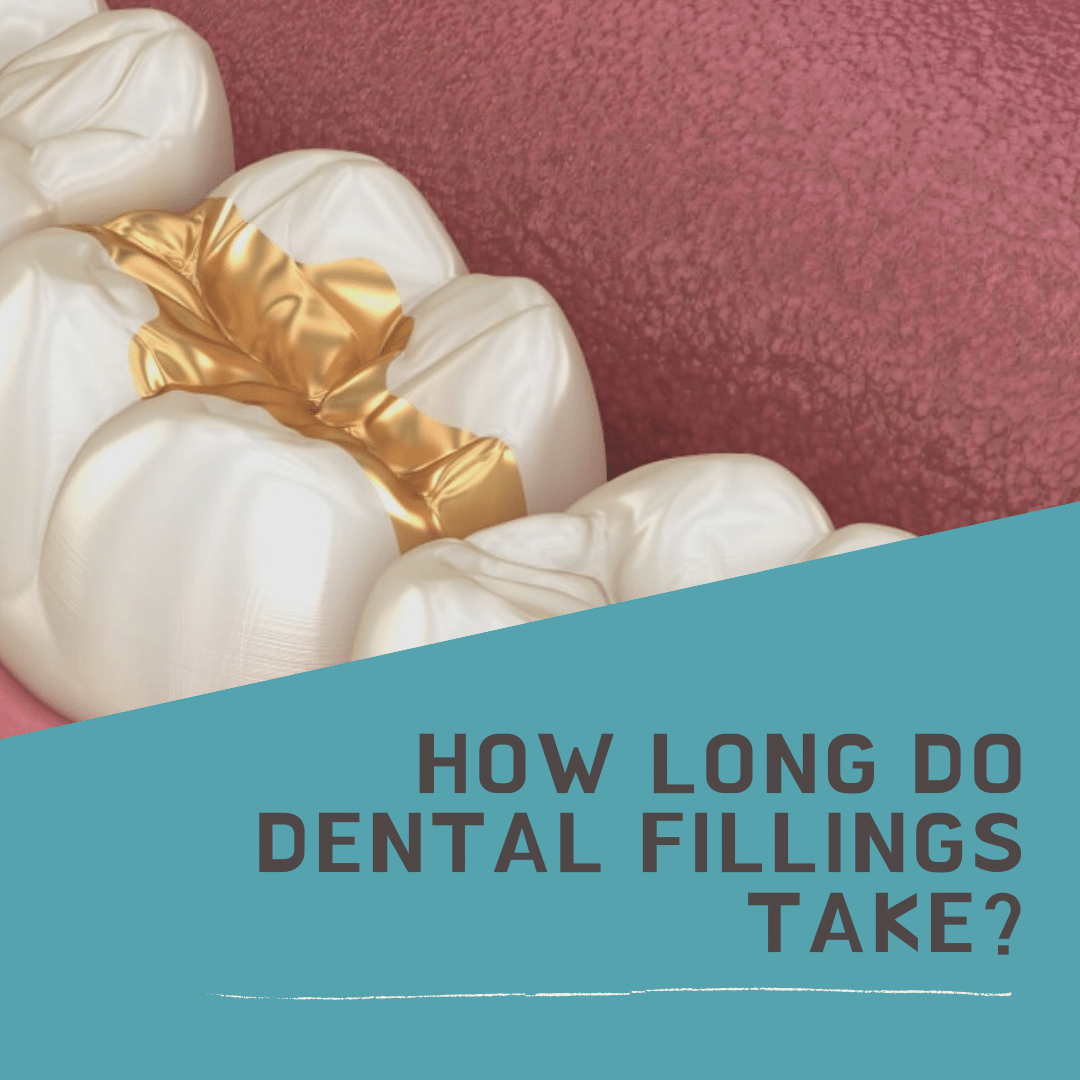You are looking for information, articles, knowledge about the topic nail salons open on sunday near me how long does it take to get two cavities filled on Google, you do not find the information you need! Here are the best content compiled and compiled by the https://chewathai27.com team, along with other related topics such as: how long does it take to get two cavities filled how long does it take for a cavity to destroy a tooth, how long does it take to fill 4 cavities, how long does it take to fill a cavity between teeth, how long does it take to fill a small cavity, how long does it take to get a cavity filled, how long does it take to fill a cavity on a child, how long does it take to fill 8 cavities, how long does it take to fill 5 cavities
In general, a filling takes an hour or less. A simple filling may take as few as 20 minutes. Many dental offices now have the technology to make onlays and inlays in one appointment, though a larger filling or multiple fillings can take longer.How many cavities can a dentist fill at once? Most dentists will not perform more than 4 fillings in one sitting. Technically there is no limit to home many fillings can be given at a time however it is not recommended to have more than 4.A typical filling procedure only takes about an hour. If you have several cavities that need to be filled, your dentist may treat them over multiple visits. After receiving a filling in one of your teeth, you may experience some soreness or tooth sensitivity. This can last for hours or days after the procedure.
Contents
Can you fill two cavities at once?
How many cavities can a dentist fill at once? Most dentists will not perform more than 4 fillings in one sitting. Technically there is no limit to home many fillings can be given at a time however it is not recommended to have more than 4.
How long does it take to fill a cavity at dentist?
A typical filling procedure only takes about an hour. If you have several cavities that need to be filled, your dentist may treat them over multiple visits. After receiving a filling in one of your teeth, you may experience some soreness or tooth sensitivity. This can last for hours or days after the procedure.
How quickly should I get a cavity filled?
Cavities don’t just form overnight; in reality, it can take a few months or even a year before the tooth decay advances to a point where the cavity will need attention. Therefore it’s essential to schedule a dental and oral examination every six months.
Are fillings painful?
Do cavity fillings hurt? Here’s the short answer: No. Most fillings cause little to no discomfort during any part of the procedure. This is a result of using highly effective numbing agents.
How long does it take to get 3 fillings?
If you have micro-cavities in your teeth, expect the procedure to be complete in approximately an hour for three teeth. The dental filling procedure is an excellent technique for repairing mild to moderate damage.
How soon after a filling can I eat?
A composite filling hardens immediately once a dentist puts a blue UV light on your tooth. You can usually eat as soon as you leave your dentist’s office. However, your dentist may recommend waiting for at least 2 hours before chewing on the filling if you’re still numb.
Do fillings hurt after?
Normal Pain
Soreness of your mouth is very common after having a cavity filled, especially around the area of the affected tooth. It is also common to experience jaw pain. This happens because you’ve had to hold your jaw open for an extended period of time while the dentist works their magic.
How long will 4 fillings take?
What exactly is a dental filling? Dental fillings take time to complete and require a methodical approach. To be safe, you should for your filling to take approximately one hour to perform from start to finish. If your cavity is small, your dentist will be able to complete your filling in substantially less time.
Do fillings hurt without an injection?
The reason your dentist normally numbs your mouth as part of the filling process is that they must use a drill to remove decayed tissue from inside the tooth. Without anesthesia, you may feel some twinges of pain while that is happening.
Can a cavity go away with brushing?
Fortunately, the beginning stages of a cavity can be reversed by taking steps toward good oral hygiene. During early demineralization, exposure to fluoride, daily brushing and flossing, and regular cleanings can all help prevent — or even reverse — tooth decay.
How long does a cavity filling hurt?
Sensitivity from a tooth filling should go away within two to four weeks. If the sensitivity doesn’t seem to be getting any better during that time, or it lasts for longer than four weeks, contact your dentist. After-care instructions for fillings.
How many cavities can you have filled at one time?
How many cavities can a dentist fill at once? Dentists may fill as many cavities as the patient is comfortable with having filled. With this being said, in most cases, dentists do not recommend having more than 3 cavities filled in one sitting. Your mouth needs time to heal.
Can you fill cavities between teeth?
If you have an interproximal cavity, there’s no need to worry! Depending on the severity of the decay, your dentist will recommend: Dental filling: A filling can be used if the cavity extends more than halfway into the enamel, restoring the tooth to its normal shape and function.
How many times can you get a filling on the same tooth?
How Many Times Can You Replace a Single Filling? There is no single number of how many times you can have a filling replaced. Usually, we will stop replacing the dental filling after the hole becomes too large. Once you have more filling material than natural tooth material your tooth no longer holds enough strength.
How many tooth fillings are normal?
Pretty much everyone gets a cavity or two in their lifetime, even with good dental hygiene. The average American adult has three fillings.
How Long Do Fillings Take for Tooth Cavities?
- Article author: www.healthline.com
- Reviews from users: 21216
Ratings
- Top rated: 4.3
- Lowest rated: 1
- Summary of article content: Articles about How Long Do Fillings Take for Tooth Cavities? Updating …
- Most searched keywords: Whether you are looking for How Long Do Fillings Take for Tooth Cavities? Updating Filling a tooth cavity is a common procedure. It often takes about an hour but can vary. Learn how long it takes to set and heal, plus the different materials used.how long do fillings take
- Table of Contents:
How long does it take to get a filling
What are the different types of fillings
What fillings are covered by insurance or Medicare
What to expect
How long does it take for a filling to set
How long does it take to heal after a filling
How long do fillings last
How do you know if you need a filling
The takeaway

Cavity Dental Filling – How Long Does It Take | Colgate® IN
- Article author: www.colgate.com
- Reviews from users: 35312
Ratings
- Top rated: 3.0
- Lowest rated: 1
- Summary of article content: Articles about Cavity Dental Filling – How Long Does It Take | Colgate® IN Updating …
- Most searched keywords: Whether you are looking for Cavity Dental Filling – How Long Does It Take | Colgate® IN Updating Cavities won’t heal on their own and need to be filled by a dentist. How long does it take to fill a cavity? Learn more at Colgate IN now.
- Table of Contents:
Our Bright Smiles Bright Futures program brings oral health education to more than half a billion children around the world
Top Articles
More Articles
The Filling Procedure What to Expect
How Long Does It Take to Fill a Cavity
How to Prevent Cavities

How Long Can I Wait To Fill A Cavity? | Port Coquitlam Dentist
- Article author: encoredental.ca
- Reviews from users: 21171
Ratings
- Top rated: 3.8
- Lowest rated: 1
- Summary of article content: Articles about How Long Can I Wait To Fill A Cavity? | Port Coquitlam Dentist Updating …
- Most searched keywords: Whether you are looking for How Long Can I Wait To Fill A Cavity? | Port Coquitlam Dentist Updating How long can I wait to fill a cavity? Maintaining a beautiful smile is the best reason to fill a cavity. Schedule a dental cleaning today!
- Table of Contents:

How Long Does It Take to Get a Tooth Cavity Filled? | Enamel Dental
- Article author: pentictondentist.com
- Reviews from users: 39027
Ratings
- Top rated: 4.3
- Lowest rated: 1
- Summary of article content: Articles about How Long Does It Take to Get a Tooth Cavity Filled? | Enamel Dental Generally, having a cavity filled takes an hour or less. Some simple fillings may take as little as 20 minutes while a larger filling or … …
- Most searched keywords: Whether you are looking for How Long Does It Take to Get a Tooth Cavity Filled? | Enamel Dental Generally, having a cavity filled takes an hour or less. Some simple fillings may take as little as 20 minutes while a larger filling or … We’ve broken down the process of how long it takes to get a tooth cavity filled, that way you can get back to smiling your best smile again!
- Table of Contents:
What Should You Expect When Getting a Tooth Cavity Filled
How Long Does a Filling Take
How Do You Know If You Need a Filling

How Long Does a Cavity Filling Take? | South High Dental
- Article author: www.southhighdental.com
- Reviews from users: 26111
Ratings
- Top rated: 5.0
- Lowest rated: 1
- Summary of article content: Articles about How Long Does a Cavity Filling Take? | South High Dental This procedure typically takes anywhere from 10 minutes to one hour but, of course, that time will vary depending on the size and location of … …
- Most searched keywords: Whether you are looking for How Long Does a Cavity Filling Take? | South High Dental This procedure typically takes anywhere from 10 minutes to one hour but, of course, that time will vary depending on the size and location of … Learn here all about cavity fillings — how long the procedure takes, what the procedure looks like and how quickly you can get back to normal.
- Table of Contents:
A Primer on Cavities and How to Handle Them
Post navigation
(614) 363-2462

How Long Does It Take To Fill A Cavity? | Colgate®
- Article author: www.colgate.com
- Reviews from users: 17421
Ratings
- Top rated: 4.3
- Lowest rated: 1
- Summary of article content: Articles about How Long Does It Take To Fill A Cavity? | Colgate® So how long does the filling procedure take? The procedure is quite straightforward and shouldn’t take about an hour to complete. If you have … …
- Most searched keywords: Whether you are looking for How Long Does It Take To Fill A Cavity? | Colgate® So how long does the filling procedure take? The procedure is quite straightforward and shouldn’t take about an hour to complete. If you have … How long does it take to fill a cavity? While getting a cavity isn’t fun, the treatment only takes about an hour, so book a visit with your dentist.
- Table of Contents:
Our Bright Smiles Bright Futures program brings oral health education to more than half a billion children around the world
Top Articles
More Articles
The Filling Procedure What to Expect
After the Filling What to Expect
Is Prevention Better Than Cure

Error 403 (Forbidden)
- Article author: www.quora.com
- Reviews from users: 35489
Ratings
- Top rated: 4.8
- Lowest rated: 1
- Summary of article content: Articles about Error 403 (Forbidden) Generally speaking, early tooth decay or tooth defect is small due to damage. Generally, fill 3 cavities can be repaired in about 1 and a half to two hours. If … …
- Most searched keywords: Whether you are looking for Error 403 (Forbidden) Generally speaking, early tooth decay or tooth defect is small due to damage. Generally, fill 3 cavities can be repaired in about 1 and a half to two hours. If …
- Table of Contents:

How Long Do Dental Fillings Take?
- Article author: bethesdafamilydentistry.com
- Reviews from users: 48977
Ratings
- Top rated: 4.4
- Lowest rated: 1
- Summary of article content: Articles about How Long Do Dental Fillings Take? Almost everyone will need to have a dental cavity filled at some point during their lifetime. · Dental fillings are essential restorative dental procedures used … …
- Most searched keywords: Whether you are looking for How Long Do Dental Fillings Take? Almost everyone will need to have a dental cavity filled at some point during their lifetime. · Dental fillings are essential restorative dental procedures used … How Long Do Dental Fillings Take?The exact time it takes to get a dental filling can deviate based upon things like the type of filling, dental material, and the size of the decayed area.
- Table of Contents:
Recent Posts
Recent Comments
Archives
Categories
Meta

How Long Does a Cavity Filling Take? Size & Location Matter | Byte®
- Article author: www.byte.com
- Reviews from users: 43652
Ratings
- Top rated: 4.4
- Lowest rated: 1
- Summary of article content: Articles about How Long Does a Cavity Filling Take? Size & Location Matter | Byte® A cavity filling can take anywhere from 15 minutes to an hour, depending on everything from the size, location, and type of the cavity, to the … …
- Most searched keywords: Whether you are looking for How Long Does a Cavity Filling Take? Size & Location Matter | Byte® A cavity filling can take anywhere from 15 minutes to an hour, depending on everything from the size, location, and type of the cavity, to the … How long it takes to fill a cavity depends on the size and location of the cavity, and what material will be used to fill the cavity. The procedure can take 15 minutes to an hour. Learn more.
- Table of Contents:
Filling Cavities
Layers of the Teeth
Types of Dental Cavities
What Goes Into a Cavity Filling
References
footer links

How Long Does a Cavity Filling Take? | Signature Smiles Dentistry
- Article author: www.signaturesmilesparker.com
- Reviews from users: 17843
Ratings
- Top rated: 3.5
- Lowest rated: 1
- Summary of article content: Articles about How Long Does a Cavity Filling Take? | Signature Smiles Dentistry We typically fill cavities in about an hour or so. The procedure could take longer if you are having multiple holes filled or your tooth has … …
- Most searched keywords: Whether you are looking for How Long Does a Cavity Filling Take? | Signature Smiles Dentistry We typically fill cavities in about an hour or so. The procedure could take longer if you are having multiple holes filled or your tooth has … When a patient requires a dental cavity filling, they often wonder, “how long does a cavity filling take?” Perhaps you, too, have a cavity and are wondering this very question.
- Table of Contents:

How Long Does a Cavity Filling Take? | Signature Smiles Dentistry
- Article author: seascape-dentistry.com
- Reviews from users: 29221
Ratings
- Top rated: 3.8
- Lowest rated: 1
- Summary of article content: Articles about How Long Does a Cavity Filling Take? | Signature Smiles Dentistry Cavities are not similar to everyone. Some cavities might be extensive, small, dark, or light. Getting holes filled might require ten … …
- Most searched keywords: Whether you are looking for How Long Does a Cavity Filling Take? | Signature Smiles Dentistry Cavities are not similar to everyone. Some cavities might be extensive, small, dark, or light. Getting holes filled might require ten … When a patient requires a dental cavity filling, they often wonder, “how long does a cavity filling take?” Perhaps you, too, have a cavity and are wondering this very question.
- Table of Contents:

See more articles in the same category here: https://chewathai27.com/toplist.
How Long Do Fillings Take for Tooth Cavities?
A filling is one of the most common dental procedures. It’s basically a repair job to fix the damage done by tooth decay. It’s typically a painless procedure that takes about an hour. Cavities are incredibly common nowadays. According to the World Health Organization, untreated cavities are the most common dental condition worldwide, experienced by approximately 2 billion people with permanent teeth (adults). A filling helps prevent further decay and allows your tooth to function as expected. Keep reading to learn more about what to expect if you need a filling, the materials most commonly used, and how long it takes for a filling to set and heal.
How long does it take to get a filling? In general, a filling takes an hour or less. A simple filling may take as few as 20 minutes. Many dental offices now have the technology to make onlays and inlays in one appointment, though a larger filling or multiple fillings can take longer. Plus, depending on the materials used for the filling, it could take longer or require a second visit. For instance: Composite resin material that’s layered into your tooth takes more time, but it’s completed in one visit.
Some composite fillings may be made from an impression. This requires a second visit to bond the filling.
Gold or porcelain fillings, also called inlays or onlays, can only be done in one sitting if your dental office has the require equipment. Otherwise, it takes multiple visits. In the first visit, the dentist will remove the cavity and make impression of your tooth. They’ll send the impression to a lab to create the filling. At the next visit, they’ll bond the filling to your tooth. Replacing an older filling generally takes about the same amount of time as the original filling. It may take slightly longer if the old filling material has to be drilled out. A healthcare professional will clean out the cavity and old filling material, then insert new filling material. How long does a filling take on a child? Cavities in children are quite common, even with good dental hygiene and a nutritious diet. According to the Centers for Disease Control and Prevention (CDC), 1 in 5 children between ages 5 and 11 have at least one untreated cavity. Fillings for children take about the same amount of time as they do for adults, with some additional considerations. Children, especially children under age 5, may require anesthesia if they cannot sit still for 20 minutes. This can add additional time to the beginning of the appointment, as well as some recovery time before you can take your child home. Nitrous oxide (sometimes called laughing gas) can also be used safely to help children stay still during the filling process. You should speak with your dentist about any accommodations your child might need. A good pediatric dentist will be able to give you an estimate of exactly how long your child’s filling will take.
What are the different types of fillings? Your dentist will discuss the various materials that can be used to fill your cavity. According to the American Dental Association (ADA), some of the most widely used options include the following materials: Silver-color fillings. These are metal amalgams — a combination of mercury, silver, tin, and copper. This material is more durable than tooth-color fillings and generally more affordable than other materials, per the ADA. Some people may have concerns about the mercury content, but the ADA has found no clinical evidence that amalgam fillings are harmful. That said, these types of fillings are being phased out.
These are metal amalgams — a combination of mercury, silver, tin, and copper. This material is more durable than tooth-color fillings and generally more affordable than other materials, per the ADA. Some people may have concerns about the mercury content, but the ADA has found no clinical evidence that amalgam fillings are harmful. That said, these types of fillings are being phased out. White tooth-color fillings (composites). These are a mix of glass or quartz particles and acrylic resin. This material is durable and costs a little more than metal amalgams, according to the ADA.
These are a mix of glass or quartz particles and acrylic resin. This material is durable and costs a little more than metal amalgams, according to the ADA. Gold fillings. This mix of gold, copper, and other metals is very durable but more expensive. They’re also not natural looking. Gold fillings are usually made in a lab after the dentist takes an impression of your tooth.
This mix of gold, copper, and other metals is very durable but more expensive. They’re also not natural looking. Gold fillings are usually made in a lab after the dentist takes an impression of your tooth. Glass ionomer fillings. These are also tooth-colored fillings, but they are not as strong as composites. They’re made of acrylic and a type of glass that contains fluoride, which can help prevent cavities. They’re often used for children’s teeth and are more expensive than amalgams.
These are also tooth-colored fillings, but they are not as strong as composites. They’re made of acrylic and a type of glass that contains fluoride, which can help prevent cavities. They’re often used for children’s teeth and are more expensive than amalgams. Porcelain fillings. These are about as expensive as gold fillings but look more natural. They’re made in a lab after the dentist takes an impression of your tooth. Current innovations According to Kenneth Rothschild, DDS, who has 40 years of experience as a general dentist, composite plastics have been used with more success over the last few decades because of their greater strength, better color varieties, and superior expected longevity. “Composites may be used not only for fillings placed in more aesthetically sensitive front areas but also on posterior teeth, such as molars and bicuspids,” he explained.
What fillings are covered by insurance or Medicare? Traditional health insurance does not typically cover fillings. If you don’t have supplementary dental insurance, you’ll need to pay out of pocket for fillings. This can cost anywhere from $100 to $500, depending on the materials being used and how many surfaces of your tooth need to be restored. If you have dental insurance, you may have a copay for fillings based on a percentage of the total cost. You may also have a flat copay for fillings. Some dental insurance even covers the cost completely. If you have original Medicare (parts A and B), it covers only dental work that is part of a covered procedure and some dental exams, according to the Centers for Medicare & Medicaid Services. Fillings are not included in traditional Medicare coverage. You can purchase a Medicare supplement plan to bring down the cost of fillings. Some supplement plans provide complete dental coverage so that your out-of-pocket cost is zero.
What to expect Fillings are generally a simple procedure: To start, your dentist will examine your mouth and use dental instruments to check the cavity. They may take an X-ray of the tooth or teeth to see the extent of tooth decay.
They’ll give you a local anesthetic to numb the tooth area. This will help prevent any pain. You may not need an anesthetic if the filling is just on the tooth surface.
Once the area is numb, your dentist will most likely use a dental drill to drill through the tooth enamel to remove the decay. Some dentists may use a laser or an air abrasion tool , but these techniques are less common.
, but these techniques are less common. Next, your dentist will sterilize and prepare the area for the filling, then fill the hole. Some types of fillings are hardened, or cured, with a blue wavelength light.
Finally, your dentist will polish the tooth and check to make sure that your bite is correct. Once the numbing has worn off, your tooth may feel a little sore or sensitive after the filling, but you shouldn’t have any pain. You should avoid very hot or very cold foods and drinks for 1 or 2 days. For the most part, though, you can eat as you usually do.
How long does it take for a filling to set? How long your filling will take to set depends on the material your dentist uses. According to Rothschild: Amalgam fillings set weakly in 1 hour and are at full strength in about 24 hours. With this type of filling, it’s best to avoid eating hard foods until the filling has completely set.
Composite fillings and glass ionomer fillings are usually light cured. They are set in 1- to 2-millimeter-thick layers, taking about 2 to 20 seconds per layer.
Ceramic fillings set immediately, with the aid of the dentist’s blue wavelength light. Rothschild explained: “It’s already milled or fired, and the bonding adhesive that holds it in place is cured in seconds.” If the length of the procedure is a concern, let your dentist know so they can recommend the best type of filling for you.
How long does it take to heal after a filling? Most fillings heal quickly without complications. After the anesthetic wears off, your tooth may feel a little sensitive, but this usually goes away in a day or so. “Metal fillings, like amalgam and gold, occasionally have a period of post-op cold sensitivity for a few days or even weeks,” Rothschild said. “This is less likely but still possible with a bonded composite or glass ionomer filling.” You can reduce tooth sensitivity by: chewing on the other side of your mouth for a couple of days
brushing and flossing more gently than usual around the filling
avoiding hot or cold food or drinks
avoiding acidic foods
using a desensitizing toothpaste
taking a nonsteroidal anti-inflammatory drug Let your dentist know if your bite feels off or if you have any long lasting pain or sensitivity. Your dentist may need to adjust the filling surface to improve your bite. How long does a filling take to stop hurting? After your filling is complete, it might take a little while for any residual pain to subside. You may feel a dull pain at the site of your dental work for several hours afterward you leave the dentist. It can also take between 2 to 7 hours for any anesthesia to wear off completely. While the anesthesia wears off, you may feel an uncomfortable “pins and needles” feeling as your nerves regain their full function. You can take an over-the-counter pain reliever (such as ibuprofen) to counteract the pain if you are extremely uncomfortable. You may also apply gentle heat or an ice pack outside your jaw to bring down swelling and soothe the pain. Avoiding highly acidic foods, cold foods, and sticky foods for an evening after your cavity will ensure the cavity seals fully and help you avoid ongoing pain and complications.
How long do fillings last? How long your filling lasts depends, in part, on your dental hygiene. Diligent dental care can extend the life of your filling and prevent a new cavity from forming on your tooth. The lifetime of a filling can also vary depending on the materials used. Remember that everyone’s teeth and lifestyle are different, so these timeframes can vary from person to person. In general: amalgam fillings last 5 to 25 years
composite fillings last 5 to 15 years
gold fillings last 15 to 20 years
How do you know if you need a filling? If you see your dentist for regular checkups, they’ll find cavities early. The sooner a cavity is treated, the better the outcome for your tooth and the less invasive the treatment is likely to be. So it’s a good investment to get regular dental checkups. Usually, there are some warning signs of a cavity, such as: teeth sensitivity to hot or cold foods and drinks
sensitivity to sugary foods and drinks
ongoing ache in a tooth
a hole or pit in a tooth
a tooth stain, either white or a darker color If you suspect you may have a cavity, make sure to visit your dentist. They can determine whether you need a filling or other treatment.
Cavity Filling Riverhead NY
Get Dental Fillings Today
You have most likely had a cavity at some point in your life that required a dental filling. It is a very common treatment used in general dentistry. A tooth filling is a routine dental treatment used to address either tooth decay or minor tooth damage.
They are used as part of a conservative treatment plan aimed at preserving the natural tooth. Dental fillings repair decay and prevent further deterioration or even the risk of tooth loss. Replacing missing teeth should be your last resort, so don’t wait to fill a tooth cavity until the last minute.
Tooth decay is an unfortunate dental problem especially prevalent among children and adolescents but people at any age are susceptible to them. A tooth cavity is commonly caused by plaque buildup. Good oral hygiene and routine dental care are the keys to minimizing your risk of tooth decay.
This will minimize your risk of needing a tooth filling and will provide the foundation for lifelong dental health.
Our team will evaluate your oral health and screen for tooth decay at every routine dental visit. We will also check on your existing fillings during routine dental visits to ensure their integrity and prevent future decay. It is very important to have your tooth decay treated as soon as possible.
When decay is caught in the earliest stages of development, a tooth filling is the most conservative treatment option. If left untreated, a cavity can actually get worse possibly requiring a root canal or even extraction.
White Tooth Fillings: Composite Resin
Bella Smiles recommends using composite resin, or “white fillings” for a safe, metal-free, and natural-looking result. They are highly durable, and decay and stain-resistant. White cosmetic fillings blend seamlessly with the surrounding teeth, creating a more natural smile.
While white fillings may be less noticeable than other materials, they usually only last between 3 and 10 years and may not be ideal for large fillings as they may chip or wear over time. Patients with metal fillings may choose to have their existing fillings replaced with white fillings.
Dental Fillings: What to Expect
A tooth filling procedure is a routine treatment and can typically be completed in a single visit to our Riverhead, Nesconset, or Roslyn, NY dentist offices. A local anesthetic will be used to numb the area and ensure that you are completely comfortable during the procedure.
Although many patients become slightly anxious at the thought of a dental filling, it is a relatively simple procedure that should produce minimal discomfort.
The affected tooth is treated, filled, and sealed. Your dentist will prepare the tooth by removing all the decay and thoroughly cleaning the area. Your filling material will be placed and formed to provide a natural-looking and comfortable surface for normal chewing and speaking.
If you are receiving a composite filling, a special blue light will be used to cure the material. Once complete, the surface of the filling will be polished and any minor adjustments can be made for a natural bite.
A dental filling should last for many years with good oral hygiene and routine dental care.
Dental Fillings FAQs
How many cavities can a dentist fill at once?
Most dentists will not perform more than 4 fillings in one sitting. Technically there is no limit to home many fillings can be given at a time however it is not recommended to have more than 4.
Do fillings stay in your mouth forever?
Fillings last a long time, but they do not last forever. Gold fillings have the longest lifespan of up to 30 years, and silver alarm fillings can last up to 15. Many people think that once a filling is placed it will not need a replacement, however, this is false. Scheduling regular visits to your dentist will ensure that your fillings are in good shape and that they are replaced when that time comes.
How long do white fillings last?
White fillings last the shortest amount of time. They typically last between 7-10 years. Most patients who choose to have white fillings make this decision for cosmetic reasons, rather than function or lifespan reasons.
Cavity Dental Filling : How Long Does It Take
Cavities develop when excessive plaque, a sticky bacterial film, accumulates on the teeth. When you consume foods or drinks that contain sugars, the bacteria in plaque produce acids. Over time, these acids can break down your tooth enamel, resulting in holes called cavities. Cavities won’t heal on their own and need to be filled by a dentist.
Learning that you need a filling can leave you with a lot of questions. What will happen during the procedure, and how long does it take to fill a cavity?
The Filling Procedure: What to Expect
Cavities are relatively easy for dentists to fix. First, dentists use a local anaesthetic, such as lidocaine, to numb the part of the mouth they’ll be treating. This anaesthetic is injected into the gum tissue, which can cause a temporary stinging sensation. Once the area is fully numb, the dentist proceeds with the treatment.
Next, the dentist will remove decay from the tooth with a dental drill or laser. After the decay has been removed, the space needs to be prepared for a filling. The dentist will shape the area and, depending on the type of filling being used, may etch the tooth with an acid gel.
Once the tooth has been prepared, the dentist can apply the filling material. Some filling materials need to be hardened with a special light. If you’re receiving this type of filling, your dentist will shine a bright light on your filling several times during the procedure.
Finally, the dentist will polish the filling. This process smooths the filling and removes any sharp edges that could injure your tongue or the lining of your cheeks.
How Long Does It Take to Fill a Cavity?
Since a filling is a common and relatively simple procedure, it doesn’t take very long to complete. A typical filling procedure only takes about an hour. If you have several cavities that need to be filled, your dentist may treat them over multiple visits.
After receiving a filling in one of your teeth, you may experience some soreness or tooth sensitivity. This can last for hours or days after the procedure. Avoid foods and drinks that can trigger sensitivity, including very hot and cold drinks, sugary foods and soft drinks. If the sensitivity doesn’t go away, or if the soreness gets worse, see your dentist.
Some types of fillings need time to fully set. Sticky or hard foods can sometimes dislodge a new filling that hasn’t fully hardened, so don’t eat these types of foods until the filling has set. Ask your dentist how long you should wait to ensure you don’t damage your filling.
Fillings may have sharp edges, even after being polished by the dentist. They might not be noticeable at first due to the anaesthetic, but they can cause discomfort once the numbness wears off. If your new filling feels sharp, tell your dentist so they can fix it.
How to Prevent Cavities
To prevent cavities, remember to establish a good oral hygiene routine. Brush your teeth twice a day and floss once per day. This routine helps remove the plaque and food particles that can contribute to the formation of cavities. Since cavity-causing bacteria feed on sugars, avoiding candy and soda can also be helpful.
Regular trips to your dentist are incredibly important, so don’t skip your biannual check-ups. These visits give your dentist and dental hygienist the opportunity to thoroughly clean your teeth and examine them for cavities.
If a cavity is left untreated, the decay could spread and more extensive treatments could be needed. While getting a cavity isn’t fun, the treatment only takes about an hour, so don’t wait to book a visit with your dentist.
So you have finished reading the how long does it take to get two cavities filled topic article, if you find this article useful, please share it. Thank you very much. See more: how long does it take for a cavity to destroy a tooth, how long does it take to fill 4 cavities, how long does it take to fill a cavity between teeth, how long does it take to fill a small cavity, how long does it take to get a cavity filled, how long does it take to fill a cavity on a child, how long does it take to fill 8 cavities, how long does it take to fill 5 cavities

